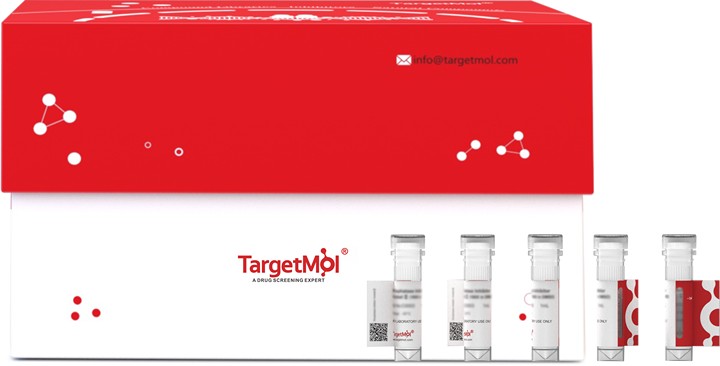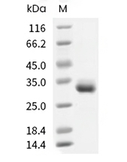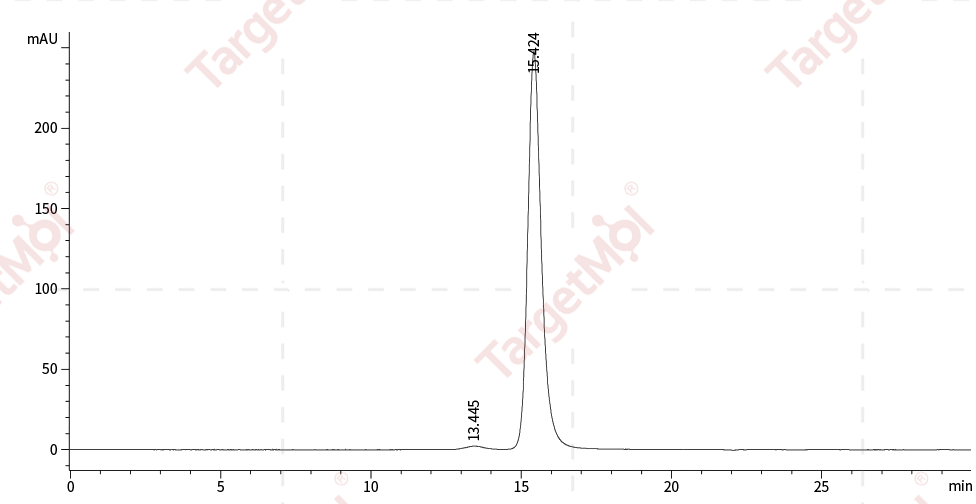购物车
全部删除  您的购物车当前为空
您的购物车当前为空
IgG1 Fc Protein, Human, Recombinant (C103S) is expressed in HEK293 mammalian cells. The predicted molecular weight is 26 kDa and the accession number is P01857-1.

| 规格 | 价格 | 库存 | 数量 |
|---|---|---|---|
| 5 μg | ¥ 198 | 3日内发货 | |
| 10 μg | ¥ 319 | 3日内发货 | |
| 20 μg | ¥ 497 | 3日内发货 | |
| 50 μg | ¥ 979 | 3日内发货 | |
| 100 μg | ¥ 1,630 | 现货 |
| 生物活性 | 1. Measured by its ability to bind human CD16a-His (Cat: TMPY-01964) in a functional ELISA.
2. Measured by its ability to bind human CD16a-AVI-His (Cat: TMPY-01965) in a functional ELISA.
3.Measured by its ability to bind human CD16a-His (Cat: TMPY-00763) in a functional ELISA. |
| 产品描述 | IgG1 Fc Protein, Human, Recombinant (C103S) is expressed in HEK293 mammalian cells. The predicted molecular weight is 26 kDa and the accession number is P01857-1. |
| 种属 | Human |
| 表达系统 | HEK293 Cells |
| 标签 | Tag Free |
| 蛋白编号 | P01857-1 |
| 别名 | Ighg1,IgG1 Fc |
| 蛋白构建 | A DNA sequence encoding the human IgG1 Fc region (P01857-1) (Glu99-Lys330) (one aa mutation, 103 Cys/Ser) was expressed. Predicted N terminal: Glu 99 |
| 蛋白纯度 | ≥ 95 % as determined by SDS-PAGE. ≥ 95 % as determined by SEC-HPLC.   |
| 分子量 | 26 kDa (predicted); 32 kDa (reducing condition, due to glycosylation) |
| 内毒素 | < 1.0 EU/μg of the protein as determined by the LAL method. |
| 蛋白性状 | Lyophilized powder |
| 缓冲液 | Lyophilized from a solution filtered through a 0.22 μm filter, containing PBS, pH 7.4. Typically, a mixture containing 5% to 8% trehalose, mannitol, and 0.01% Tween 80 is incorporated as a protective agent before lyophilization. |
| 复溶方法 | A Certificate of Analysis (CoA) containing reconstitution instructions is included with the products. Please refer to the CoA for detailed information. |
| 存储 | It is recommended to store recombinant proteins at -20°C to -80°C for future use. Lyophilized powders can be stably stored for over 12 months, while liquid products can be stored for 6-12 months at -80°C. For reconstituted protein solutions, the solution can be stored at -20°C to -80°C for at least 3 months. Please avoid multiple freeze-thaw cycles and store products in aliquots. |
| 运输方式 | In general, Lyophilized powders are shipping with blue ice. |
| 研究背景 | As a monomeric immunoglobulin that is predominately involved in the secondary antibody response and the only isotype that can pass through the human placenta, Immunoglobulin G (IgG) is synthesized and secreted by plasma B cells, and constitutes 75% of serum immunoglobulins in humans. IgG antibodies protect the body against the pathogens by agglutination and immobilization, complement activation, toxin neutralization, as well as antibody-dependent cell-mediated cytotoxicity (ADCC). IgG tetramer contains two heavy chains (5 kDa ) and two light chains (25 kDa) linked by disulfide bonds, that is the two identical halves form the Y-like shape. IgG is digested by pepsin proteolysis into Fab fragment (antigen-binding fragment) and Fc fragment ("crystallizable" fragment). IgG1 is most abundant in serum among the four IgG subclasses (IgG1, 2, 3 and 4) and binds to Fc receptors (FcγR ) on phagocytic cells with high affinity. Fc fragment is demonstrated to mediate phagocytosis, trigger inflammation, and target Ig to particular tissues. Protein G or Protein A on the surface of certain Staphylococcal and Streptococcal strains specifically binds with the Fc region of IgGs, and has numerous applications in biotechnology as a reagent for affinity purification. Recombinant IgG Fc Region is suggested to represent a potential anti-inflammatory drug for treatment of human autoimmune diseases. |